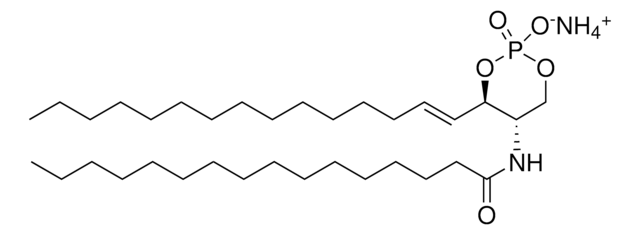CLL1139
SKOV3 Cells GFP-STAT3
human female ovary (Source Disease: Ovarian adenocarcinoma)
Zaloguj sięWyświetlanie cen organizacyjnych i kontraktowych
About This Item
Kod UNSPSC:
41106514
NACRES:
NA.81
Polecane produkty
product name
SKOV3 Cells GFP-STAT3,
pochodzenie biologiczne
human female ovary (Source Disease: Ovarian adenocarcinoma)
numer dostępu OMIM
temp. przechowywania
−196°C
informacje o genach
human ... STAT3(6774)
Opis ogólny
SKOV3 GFP-STAT3 are ovarian adenocarcinoma cells from a human 64 year old caucasion female having a ZFN modification creating a GFP-STAT3 transgene expressed from the endogenous STAT3 gene locus.
This cell line was derived from ATCC Catalog No. HTB-77.
This cell line was derived from ATCC Catalog No. HTB-77.
Zastosowanie
This product is a human SKOV3 cell line in which the genomic STAT3 gene has been endogenously tagged with a Green Fluorescent Protein (GFP) gene using CompoZr® zinc finger nuclease technology. Integration resulted in endogenous expression of the fusion protein in which GFP is attached to the N-terminus of STAT3. Fluorescence imaging shows GFP-STAT3 expression throughout the cell. Upon activation with the ligand IL-6, the cell line shows redistribution of STAT3 from the cytoplasm to the nucleus, making it useful for high content screening of compounds that modulate STAT3 activity. This stable cell line was expanded from a single clone. The target′s gene regulation and corresponding protein function are preserved in contrast to cell lines with overexpression via an exogenous promoter.
To learn more, please visit the Cellular Reporter Cell Line webpage
To learn more, please visit the Cellular Reporter Cell Line webpage
Cechy i korzyści
Zinc Finger Nuclease (ZFN)-mediated targeted integration of a fluorescent GFP tag just behind the start codon of the STAT3 gene on chromosome 17q21.2 to create a cell line exhibiting stable expression of the transgene tagged with GFP on the N-terminus of the protein.
These SKOV3 cells are adherent with a doubling time of approx. 48 hours.
These SKOV3 cells are adherent with a doubling time of approx. 48 hours.
Jakość
Tested for Mycoplasma, sterility, post-freeze viability, short terminal repeat (STR) analysis for cell line identification, cytochrome oxidase I (COI) analysis for cell line species confirmation.
Uwaga dotycząca przygotowania
Media Renewal changes two to three times per week.
Rapidly thaw vial by gentle agitation in 37°C water bath (~2 minutes), keeping vial cap out of the water. Decontaminate with 70% ethanol, add 9 mL culture media and centrifuge 125 x g (5-7 minutes). Resuspend in complete culture media and incubate at 37°C in a 5% CO2 atmosphere.
Subculture Ratio: approx. 1:3-1:6
The base medium for this cell line is McCoy′s 5A Medium, Cat. No. M8403. To make the complete growth medium, add the following components to the base medium: fetal bovine serum, Cat. No. F2442, to a final concentration (v/v) of 10% and L-glutamine, Cat. No. G7513, at a final concentration of 1.5 mM.
Cell freezing medium-DMSO 1X, Cat. No. C6164.
Rapidly thaw vial by gentle agitation in 37°C water bath (~2 minutes), keeping vial cap out of the water. Decontaminate with 70% ethanol, add 9 mL culture media and centrifuge 125 x g (5-7 minutes). Resuspend in complete culture media and incubate at 37°C in a 5% CO2 atmosphere.
Subculture Ratio: approx. 1:3-1:6
The base medium for this cell line is McCoy′s 5A Medium, Cat. No. M8403. To make the complete growth medium, add the following components to the base medium: fetal bovine serum, Cat. No. F2442, to a final concentration (v/v) of 10% and L-glutamine, Cat. No. G7513, at a final concentration of 1.5 mM.
Cell freezing medium-DMSO 1X, Cat. No. C6164.
Informacje prawne
CompoZr is a registered trademark of Merck KGaA, Darmstadt, Germany
Oświadczenie o zrzeczeniu się odpowiedzialności
RESEARCH USE ONLY. This product is regulated in France when intended to be used for scientific purposes, including for import and export activities (Article L 1211-1 paragraph 2 of the Public Health Code). The purchaser (i.e. enduser) is required to obtain an import authorization from the France Ministry of Research referred in the Article L1245-5-1 II. of Public Health Code. By ordering this product, you are confirming that you have obtained the proper import authorization.
Kod klasy składowania
10 - Combustible liquids
Klasa zagrożenia wodnego (WGK)
WGK 3
Temperatura zapłonu (°F)
Not applicable
Temperatura zapłonu (°C)
Not applicable
Certyfikaty analizy (CoA)
Poszukaj Certyfikaty analizy (CoA), wpisując numer partii/serii produktów. Numery serii i partii można znaleźć na etykiecie produktu po słowach „seria” lub „partia”.
Masz już ten produkt?
Dokumenty związane z niedawno zakupionymi produktami zostały zamieszczone w Bibliotece dokumentów.
Nasz zespół naukowców ma doświadczenie we wszystkich obszarach badań, w tym w naukach przyrodniczych, materiałoznawstwie, syntezie chemicznej, chromatografii, analityce i wielu innych dziedzinach.
Skontaktuj się z zespołem ds. pomocy technicznej







